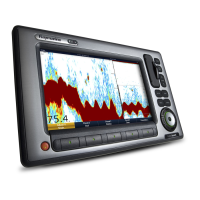Chapter 6: The Fishfinder 147
Ping Enable
Normally enabled, you can disable the ping when appropriate: to test other
equipment, or if there is a diver beneath the vessel, for example.
81244_4.book Page 147 Thursday, January 31, 2008 1:53 PM

